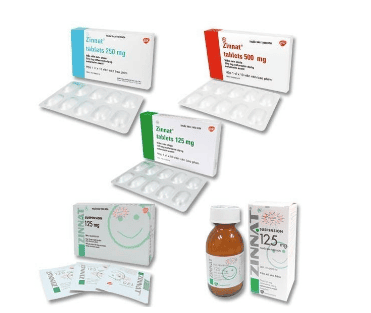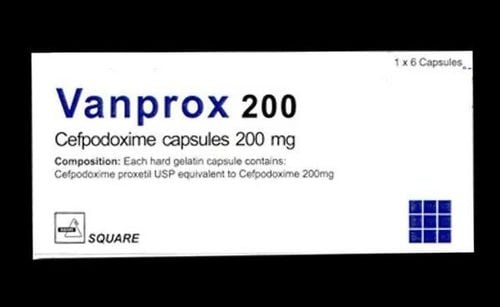This is an automatically translated article.
Drug Imedoxim is a drug to treat parasites that cause inflammation in the body. The drug has 2 dosage forms, Imedoxim 200 and Imedoxim 100. Finding out information about ingredients and uses helps patients use the drug effectively, avoiding unwanted side effects.
1. What is Imedoxime?
What is Imedoxime? Imedoxim medicine has the main ingredient Cefpodoxime in the form of Cefpodoxime proxetil. Drugs used to treat infections, toxic parasites that affect human health.
Imedoxim medicine has 2 dosage forms, Imedoxim 200 and Imedoxim 100:
Capsule form with 200g content. Nuggets pack with content of 100g
2. Indications and contraindications of the drug Imedoxime
2.1. Indications Imedoxim is indicated for the treatment of the following pathologies:
Indications for the treatment of upper respiratory tract infections: acute otitis media, sinusitis, pharyngitis, tonsillitis, and community-acquired acute pneumonia. Uncomplicated acute gonococcal infection. Uncomplicated urinary tract infections Skin and soft tissue infections. 2.2. Contraindications Imedoxime is contraindicated in patients with a history of hypersensitivity to the main active ingredient such as cefpodoxime proxetil.
3. Usage and dosage of Imedoxime
3.1. How to use Because the drug Imedoxim has 2 dosage forms, capsules and nuggets, so depending on the doctor's instructions, the patient has different ways of using the drug. Patients should strictly follow the instructions of the doctor, absolutely do not change the dose or change the route of medication on their own.
3.2. Dosage Adult
Treatment of upper respiratory tract infections, tonsillitis, pharyngitis: The dose is 100 mg every 12 hours and used within 10 days. Community-acquired acute pneumonia: The dose is 200 mg every 12 hours and used for a period of 14 days. Treatment of uncomplicated acute gonococcal infection: Use a single dose of 200 mg. Treatment of uncomplicated urinary tract infections: The dose is 100 mg every 12 hours and used for a period of 7 days. Treatment of skin and skin structure infections: 400 mg every 12 hours and used for a period of 7-14 days. Children
Treatment of acute otitis media: The dose is 10 mg/kg/day (maximum dose of 400 mg/day divided into 2 times) used for 10 days. Treatment of pharyngitis, tonsillitis: Dosage: 10 mg/kg/day (maximum 200 mg/day divided into 2 times) used within 10 days. Note: Active ingredient Cefpodoxime should be administered with food. In patients with renal impairment with creatinine clearance less than 30 ml/min, the dosing interval should be increased to 24 hours. In patients with cirrhosis, no dose adjustment is required.
4. Notes when using the drug Imedoxime
During the use of Imedoxim, patients should pay attention to the following issues:
Pregnant and lactating women: Do not use Imedoxim for pregnant women and mothers who are breastfeeding. . Because at present, the evidence about the safety level of Imedoxime to this audience is still very limited. If in the process of mandatory use, the patient should have a doctor's prescription and after weighing the benefits more than the risks. Use of Imedoxim for drivers and operators of machines: Caution should be taken when using Imedoxim for drivers and machine operators, people who need to work with high concentration, because the drug has an impact on the system. nerve.
5. Side effects when using Imedoxim
Currently, side effects reported in clinical trials are mild and transient. Typical are: Diarrhea, nausea, vomiting, abdominal pain, colitis, headache.
Very rarely, hypersensitivity reactions, pruritus, rash, dizziness, thrombocytopenia, thrombocytopenia, leukopenia and eosinophilia have occurred during the use of Imedoxime.
If during the use of Imedoxim, the patient encounters unusual side effects, it is necessary to notify the doctor immediately for examination and reasonable adjustment.
6. Drug interactions
Concomitant use with multiple drugs can cause dangerous drug interactions. Accordingly, plasma concentrations may be reduced by approximately 30% when the active ingredient cefpodoxime proxetil is administered in combination with an antacid or an H2 inhibitor. When combining Cefpodoxime with nephrotoxic compounds, patients should be closely monitored for renal function. Plasma concentrations of the active substance cefpodoxime are increased when cefpodoxime is administered concomitantly with probenecid. Altering laboratory values: Cephalosporins cause a positive direct Coomb test.
7. Treatment of missed dose and overdose of Imedoxim
Missed dose: If you miss a dose of Imedoxime, take it as soon as possible. However, if it is almost time for your next dose, skip the missed dose of Imedoxime and take your next dose of Imedoxime at the scheduled time. It should be noted that the dose should not be taken twice as much as prescribed at the same time.
Overdose: Using an overdose of Imedoxime can cause complications, affecting health. Therefore, in urgent cases, the patient should immediately call the Emergency Center 115 or go to the nearest local health station for examination and treatment.
Store Imedoxim in a cool, dry place, out of reach of children and family pets. Absolutely do not use the medicine when it has expired or is deformed or discolored.
In summary, the drug Imedoxim has the main ingredient Cefpodoxime in the form of Cefpodoxime proxetil. Drugs used to treat infections, toxic parasites that affect human health. To ensure effective use and avoid unwanted side effects, patients need to use the drug exactly as directed by the doctor, professional pharmacist.













